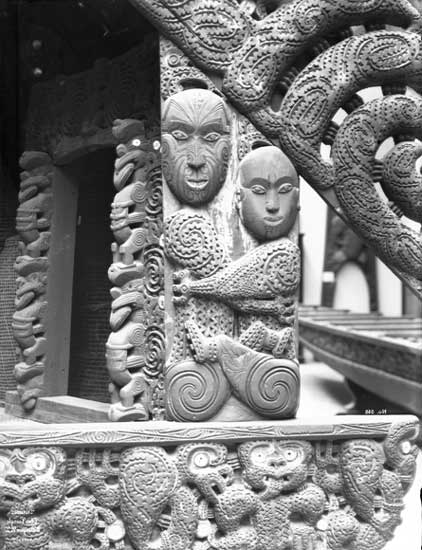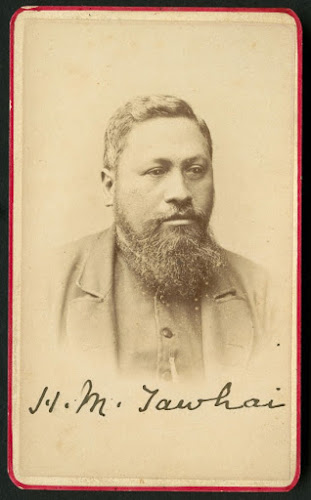Kīngitanga and Crown: New Zealand’s Māori King Movement and its Relationship with the British Monarchy
A new book published last month
as part of Manchester University Press’s Studies in Imperialism series explores
the many connections between European monarchies and their overseas colonies. Crowns and Colonies: European Monarchies and Overseas Empires is edited by Robert Aldrich and Cindy McCreery and draws
in many cases on papers presented at a conference on the same theme held at the
University of Sydney in June 2014. I presented a paper at that conference on
the historical relationship between the Kīngitanga and the British royal family
and a revised version of this appears in Crowns
and Colonies. The following synopsis sets out some of the key themes
explored in my chapter.
In June 1858 Potatau Te
Wherowhero was installed as the first Māori King. Although the move was by no
means a unanimous one even within his own Waikato tribe, European observers
keenly debated the meaning of this act. Whether the Māori King movement (the Kīngitanga)
was intended as a challenge to British sovereignty over New Zealand or was a
more benign gesture became the question of the day. Yet supporters of the Kīngitanga
saw nothing incompatible between allegiance to it and ongoing adherence to
Queen Victoria (though colonial governments were a different matter). They
declared themselves to be for ‘The Queen, the King and the Runanga’ (a kind of
tribal assembly or council).
As this chapter outlines, even
after British imperial troops invaded the Waikato district in 1863 in an effort
to destroy the movement and confiscate its supporters’ lands, the Kīngitanga tribes
continued to place great faith in the Queen and her successors. For them, the
relationship was a deeply spiritual bond, cemented through the Treaty of
Waitangi in 1840 that had installed her as a great chief of New Zealand. Their
deep and abiding conviction that the British monarch would bring justice to her
Māori people if only she knew their true situation resulted in deputations to
Britain from the late nineteenth century onwards, led by the Māori King, in an
effort to have their grievances redressed.
But in the twentieth century
royal visitors to New Zealand found themselves caught up in intricate local
politics over whether the (still not officially recognised) Māori monarch should
be granted a meeting with his British counterpart. For Kīngitanga supporters,
this mattered a great deal. Long after the British government had ceased to
have any meaningful role in the governance of New Zealand, Kīngitanga leaders
continued to look to the monarch to honour the undertakings entered into by
Queen Victoria at Waitangi. Although Kīngitanga dealings with colonial
governors and officials are well known, there has previously been little specific
consideration of these monarchical relationships and their significance.





Comments
Post a Comment